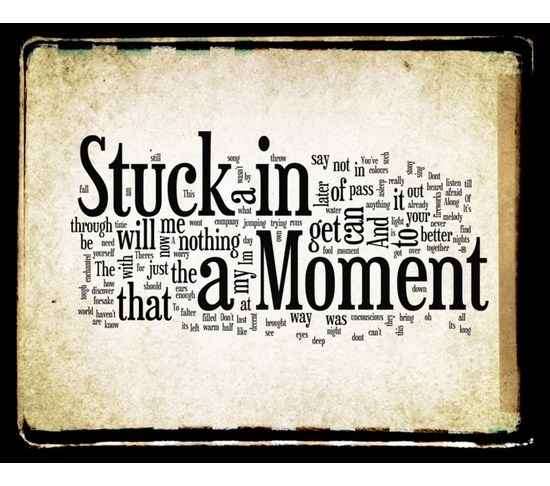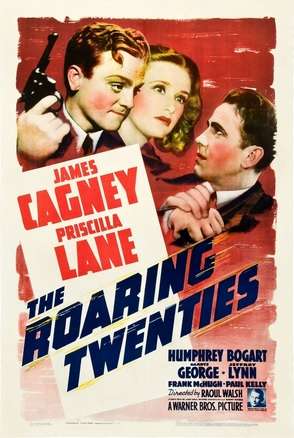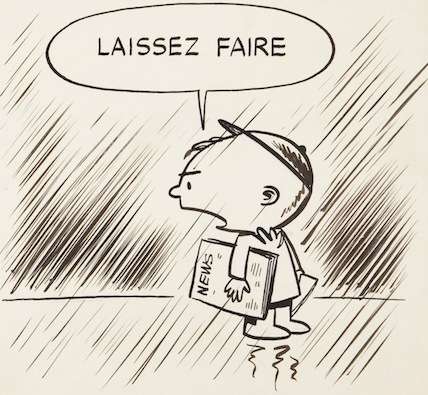A Short History of Libertarian Moments
From the 1920s to today

Tonight my colleague Matt Welch will appear onstage at the Cato Institute, where he'll debate whether we're in the midst of a libertarian moment.
That phrase has been bumping around ever since Matt wrote a Reason feature with Nick Gillespie called "The Libertarian Moment" back in 2008. The term got more exposure after Robert Draper published a piece in The New York Times two years ago called "Has the 'Libertarian Moment' Finally Arrived?" Matt and Nick's story argued that there has been a broad social trend toward choice, individualism, and a breakdown of monopoly institutions, and that politics will eventually have to catch up. Draper's article was mostly just focused on the politics, with a particular interest in Sen. Rand Paul. Any argument about whether a libertarian moment is ongoing or over or never got started has to begin by figuring out whether you're responding to the Welch/Gillespie vision of a long shift or to Draper's snapshot of a candidate on the verge of what turned out to be a dud of a presidential campaign.
At the risk of making it even easier for people to talk past each other, let me suggest yet another way to think about a libertarian moment: as an actual historical moment. Or, more exactly, as a kind of historical moment. Two kinds, really.

The first is what you might call a libertarian interval: eras that fall between the kinds of crises, usually wars, that fuel government growth and encourage a culture of "common purpose." One example is the stretch of time—the 1920s, basically—that came between World War I and the Great Depression. This was hardly a period of pure libertarianism, given that laws like Prohibition were on the books, but it's still a decade widely associated with individualism in culture and antistatism in politics. Less well-remembered is a blink-and-you'll-miss-it moment in the mid-1940s, when World War II was over and the Cold War had not yet fully begun. To modern eyes this brief time may look "left-wing," inasmuch as there was still a faint hope for peaceful coexistence with the Communist bloc. Or it might look "right-wing," given Washington's retreat on several economic fronts: Wartime controls were lifted, there was a sudden sharp decline in federal spending, and in 1946 voters elected the so-called "do nothing Congress," which tended to be skeptical about economic interventions (with one significant exception, which we'll get to below). It certainly looks different from the years immediately before and after it.
And then, of course, there's the '90s interval that separates the Cold War from the War on Terror. The modern libertarian movement grew in size and influence then. But it also boomed in two other recent periods, neither of which fits this model. One is the 1970s, and the other began with Ron Paul's presidential campaign of 2007-08. These moments didn't come between crises. They came when the state and other powerful institutions seemed utterly incapable of handling the crises that were already ongoing. The '70s saw stagflation, the failure of a major war, and a series of scandals that undermined the moral authority of both the presidency and the national security agencies. The late '00s featured another failed war and a financial crisis that, like the stagflation episode, forced Americans to question the wisdom of the allegedly expert stewards of the economy. If the '20s, the mid-'40s, and the '90s are libertarian intervals, these might be called libertarian disillusionments.

Needless to say, libertarianism isn't the only movement that thrives in these moments. An interval between crises can unleash all kinds of activities. The end of World War II, for example, meant that a bunch of wartime restrictions on labor activism were removed; the Cold War brought a new crackdown on radical organizers. In between, there was a wave of militant labor activism. (In addition to that Cold War crackdown—though it wasn't entirely unrelated—1947 saw the passage of the Taft-Hartley Act, which imposed new restrictions on labor organizing. Interestingly, the law also struck a blow against the libertarian elements of the right: George Lipsitz makes a strong case in Rainbow at Midnight that Taft-Hartley reflected a shift away from conservative efforts to roll back the corporate-liberal order and towards a willingness to try to bend that order to their own ends.) A range of movements thrive during disillusionments, too: When a society's central institutions seem to be failing, anti-institutional ideas of all kinds can take hold. The '70s were boom years for everyone from Naderites to Reaganites; libertarians alternately allied and competed with movements of both the left and the right. The last nine years, similarly, have seen surges in both left-wing and right-wing activism, some of it libertarian-friendly and some of it not.
If a libertarian interval ends with a new crisis being declared, how does a disillusionment-driven moment end? It's hard to say, given that I've identified just two of those periods and the second hasn't necessarily wrapped up yet. But one thing should be clear: With a strong enough feeling of crisis, even a battered consensus can reassert itself.
The once-bright possibility of a left/right alliance against overpolicing and mass incarceration has dramatically dimmed, with Republicans who once seemed open to criminal justice reform instead talking in crisis terms about crime, riots, and the mythical "war on cops." Similarly, it's been just three years since a left/right alliance against the national security state seemed to be emerging, with not just Rand Paul but even Ted Cruz speaking out against NSA surveillance. The electorate was increasingly skeptical about military intervention abroad—for a brief period, a plurality even regretted the war in Afghanistan—and public pressure helped prevent (or at least delay) American intervention in Syria. But the rise of ISIS has revived the sense of crisis and pushed the GOP back toward the martial rhetoric we saw in the Bush era. Whether or not we're living in a libertarian moment, we're certainly living in a backlash moment.
But backlashes don't always succeed. The movement against the carceral state is still extremely active, even if it isn't the transpartisan coalition it used to be. And the Republican frontrunner did just manage to win the South Carolina primary—South Carolina!—while declaring the Iraq war "a big fat mistake" and saying "they lied" when "they said there were weapons of mass destruction." Donald Trump is not a dove and it would be foolish to expect him to govern as one, but his ability to say such things without paying a political price shows that an inchoate anti-interventionist sentiment still has a home on the right.
I called these periods libertarian moments, but it might be better to call them moments of possibility: times when the traditional institutions of power are less able to set the agenda, when ideas from the margins suddenly show up in the center. We're clearly at a time like that now. The question for libertarians is how to adjust to those shifting sands. Or, put differently, how to try to seize the moment.
Show Comments (75)